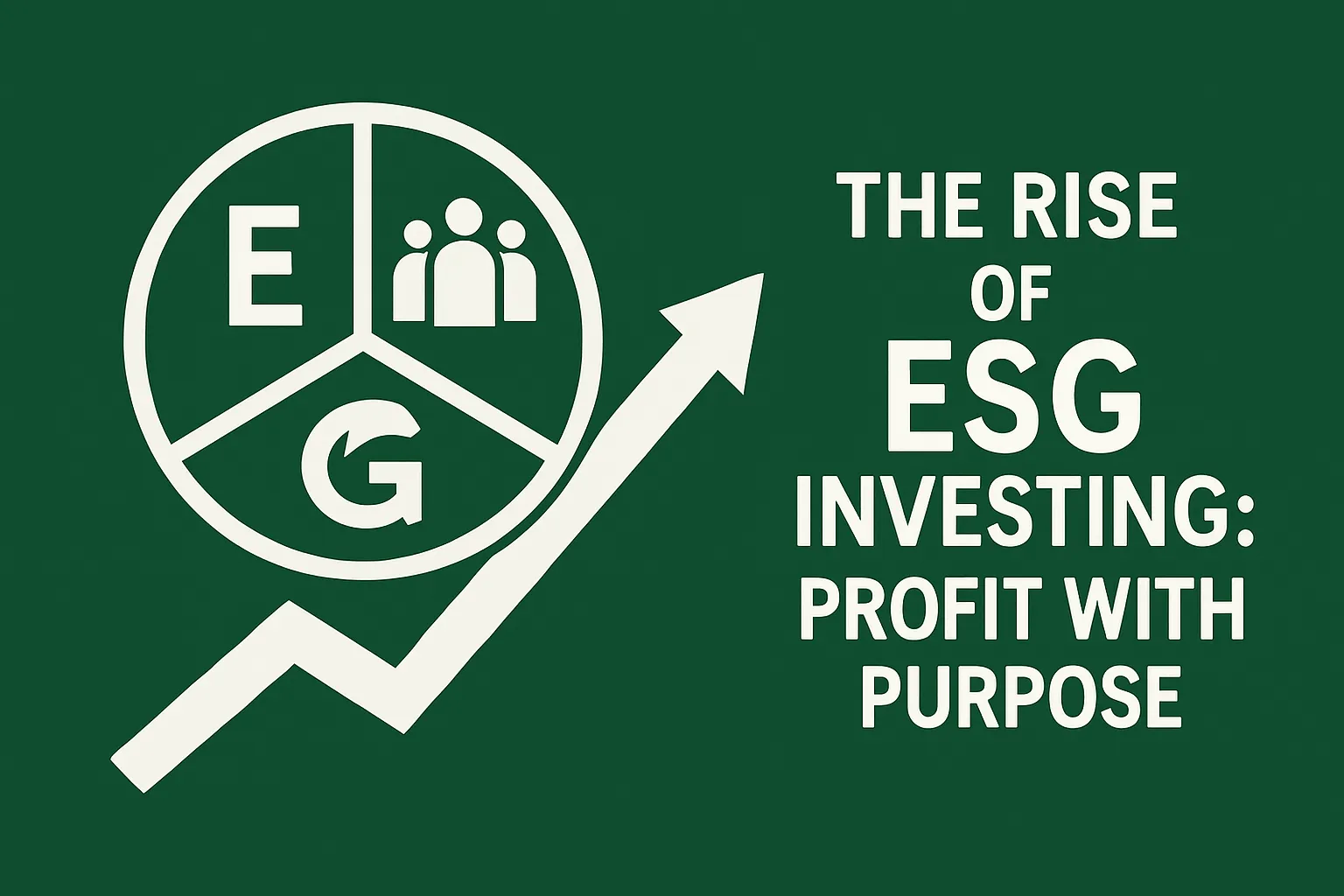
The Rise of ESG Investing: Profit with Purpose
In recent years, the investment world has experienced a significant shift. More and more investors are turning to ESG investing—short for Environmental, Social, and Governance—as a way to align their portfolios with their values. This growing trend reflects a powerful realization: investing can generate both financial returns and positive social impact.
What is ESG Investing?
ESG investing is a strategy that considers a company’s environmental footprint, social responsibility, and governance practices alongside traditional financial metrics. Instead of focusing solely on profit, ESG investors evaluate how a business treats the planet, its employees, customers, and how ethically it is managed.
Environmental
This criterion looks at how a company impacts the environment. Key factors include carbon emissions, renewable energy use, waste management, and sustainability initiatives.
Social
The social aspect evaluates how a company interacts with its employees, customers, suppliers, and the communities where it operates. It includes diversity, human rights, and workplace conditions.
Governance
Governance refers to corporate leadership, transparency, executive pay, and shareholder rights. A strong governance structure often leads to better accountability and decision-making.
Why ESG Investing is Gaining Popularity
- Consumer Awareness: People are more conscious of how companies operate. They want their money to support ethical businesses.
- Performance Potential: Studies have shown that ESG-focused companies can outperform their peers over the long term due to better risk management and sustainability practices.
- Regulatory Trends: Governments and institutions are pushing for more transparency and accountability in corporate behavior.
Benefits of ESG Investing
Aside from peace of mind, ESG investing offers tangible benefits:
- Risk Reduction: ESG investments can help avoid companies involved in scandals or environmental disasters.
- Long-Term Returns: Companies that care about ESG factors tend to be forward-thinking and resilient.
- Portfolio Diversification: ESG funds span various industries and regions, helping spread risk.
Challenges and Considerations
Despite its appeal, ESG investing isn't without challenges:
- Data Inconsistency: There's no universal ESG rating system, making comparisons difficult.
- Greenwashing: Some companies exaggerate their sustainability claims to attract investors.
- Limited Track Record: ESG strategies are relatively new, so historical data is limited.
How to Get Started
Here’s how you can begin ESG investing:
- Identify your values and priorities (e.g., climate change, human rights).
- Look for ESG mutual funds or ETFs from reputable financial institutions.
- Use ESG rating tools like MSCI or Morningstar Sustainability Ratings.
- Monitor and adjust your portfolio as ESG data and trends evolve.
Final Thoughts
ESG investing is more than a trend—it's a movement reshaping how we think about money and impact. With the right approach, you don’t have to choose between financial gain and doing good. Instead, you can achieve both. As the saying goes, “Profit with purpose.”
